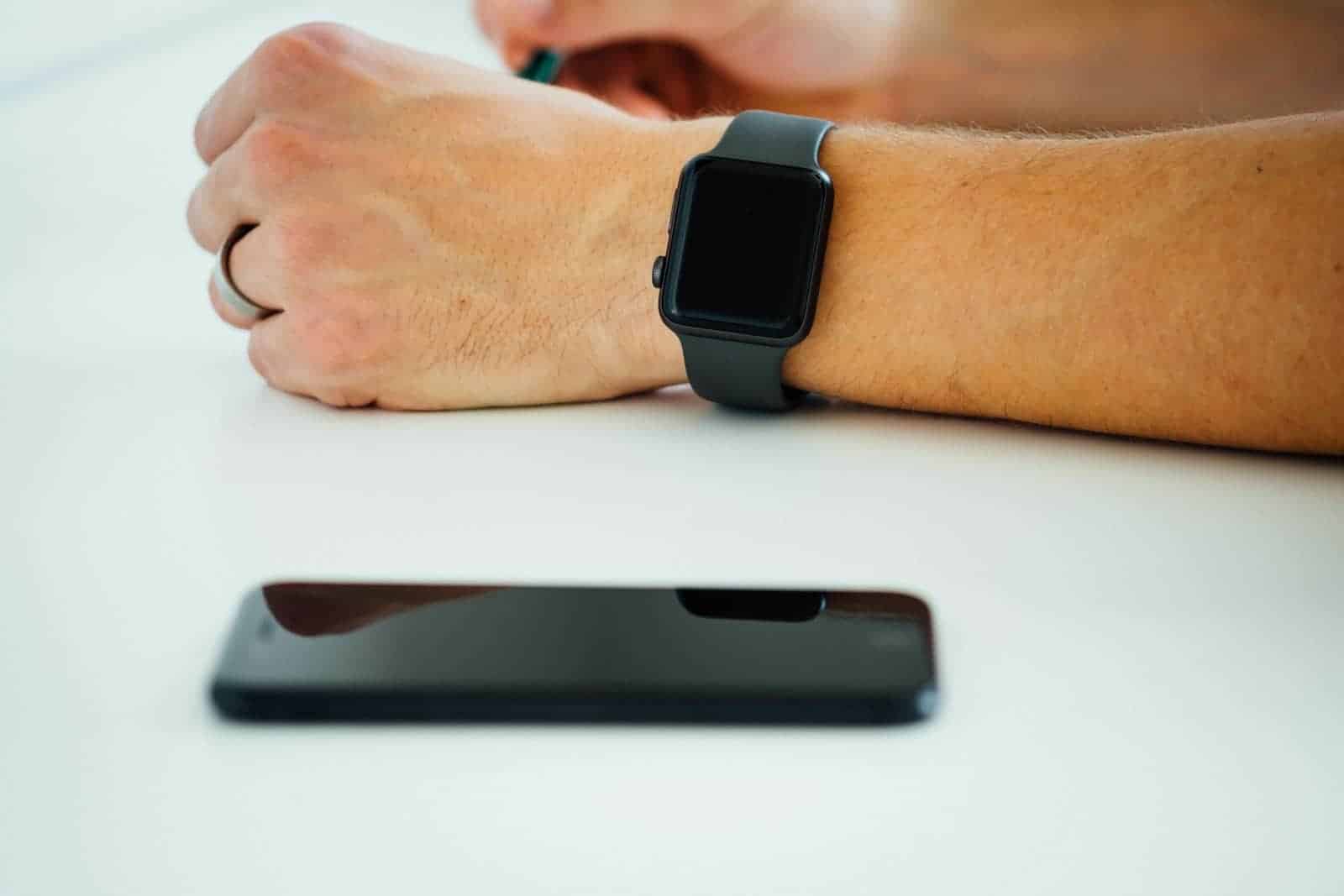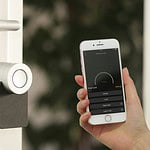The cost of replacing the battery in your Apple Watch varies depending on several factors. Here’s a breakdown to help you understand what to expect:
Costs To Replace Battery In Apple Watch
If your Apple Watch is still covered under Apple Care+ there is no charge to replace the battery (for valid reasons as determined by Apple). If it is no longer under warranty, you’ll incur a battery service fee. These fees are currently as follows:
| Apple Watch Model | Apple Repair Cost | Apple Care+ Cost | 3rd Party |
|---|---|---|---|
| Apple Watch Series 4 and newer | $99 | $0 | $89 |
| Apple Watch Series 2 and Series 3 | $79 | $0 | $79 |
AppleCare+ Coverage
If you have AppleCare+ for your Apple Watch, your battery service may be covered at no additional cost. However, this is only applicable if your battery’s maximum capacity has dropped below 80% and it’s within your AppleCare+ coverage period.
How to check your Apple Watch battery health
- Open the “Settings” app on your Apple Watch.
- Scroll down and tap on “Battery”.
- Tap on “Battery Health”.
- Look for the section titled “Maximum Capacity” – this percentage indicates your battery’s health.
DIY vs. Professional Replacement
While it’s technically possible to replace an Apple Watch battery yourself, Apple strongly discourages this. The procedure requires specialized tools and knowledge. Attempting a DIY replacement could damage your watch and void any remaining warranty. It’s generally recommended to have your battery replaced through Apple or an authorized service provider.
Factors Affecting Battery Life
The lifespan of your Apple Watch battery depends on your usage patterns. Here’s how your habits influence battery life:
- Heavy use: Frequent use of GPS, cellular data, fitness tracking, and always-on display can all significantly drain the battery.
- Software updates: New watchOS updates may introduce features or optimizations that can impact battery life.
- Background activity: Some apps running in the background may continuously drain battery power.
Understanding Apple Watch Battery Replacement
Replacing your Apple Watch battery can be simple if you know when and how to do it. In this section, you’ll get to know the ins and outs of the service provided by Apple and the signs that indicate the need for a battery swap.
Battery Replacement Service Overview
Apple offers a battery service for watches that might be out of power. If your watch is acting up, you can take it to Apple, and for a certain fee, they’ll fix it right up. With AppleCare+, if your Apple Watch battery holds less than 80% of its original capacity, they will service your battery at no extra charge. Without AppleCare+, a recent update in their pricing has set battery replacement costs at $99. This fee doesn’t include taxes that might apply based on your location.
Signs You Need a Battery Replacement
How can you tell it’s time for a new battery? If your Apple Watch dies quicker than it used to or struggles to hold a charge, these are the first hints. Every battery has a lifespan, measured in charge cycles. Once you’ve gone through enough of these, the battery won’t work as it did when new. Apple defines one cycle as using 100% of the battery’s charge, which doesn’t necessarily happen all at once. When your device’s battery life shortens dramatically, consider getting it replaced to maintain performance.
Determining Your Apple Watch Model
Identifying your Apple Watch model is a straightforward task that lays the foundation for understanding its features and the potential costs associated with a battery replacement. Start by taking off your Apple Watch and flipping it over. On the back of the watch case, you’ll find the model number engraved in fine print, beginning with “A”.
Apple Watch models are distinct, with each series having its unique design and abilities. For example, the Apple Watch Series 2 introduced water resistance and built-in GPS—a step up from its predecessor. Apple Watch Series 4 brought a larger display and advanced heart rate monitoring features to the family. These updates also impact battery usage and, consequently, can affect battery service needs over time.
Here’s a quick reference to locate your model number:
- Original Apple Watch & Series 1: Look for “A1553” (38mm) or “A1554” (42mm).
- Apple Watch Series 2: Search for “A1757” (38mm) or “A1758” (42mm).
- Apple Watch Series 4 and newer models: These feature a different case size—see “A1975” (40mm) or “A1976” (44mm) for Series 4.
Once the model number is in hand, it’s a breeze to match your device to its series and learn about the specifications that set it apart. This information ensures you get accurate service, whether upgrading features or replacing the battery. Remember, features like GPS and heart rate monitors can influence your watch’s battery life and the approach technicians take when servicing your device.
Cost Factors for Battery Replacement
When your Apple Watch battery needs replacing, two main factors affect the price: whether your watch is out-of-warranty and if you have AppleCare+.
Out-of-Warranty Costs
For out-of-warranty service, Apple typically charges a fee which can vary based on the model of the Apple Watch. According to recent information, replacing the battery in most Apple Watch models costs $79. This fee does not include potential additional charges such as taxes or fees assessed by authorized service providers.
AppleCare+ Considerations
If you’ve invested in AppleCare+ for your Apple Watch, you’re entitled to more favorable terms for battery service. Should your battery hold less than 80% of its original capacity and you’re covered by AppleCare+, the battery service might be conducted at no additional cost. Additionally, consumer law might provide certain rights that can affect the replacement value and coverage of your device’s battery service.
Warranty and AppleCare+ Details
When you buy an Apple Watch, it comes with a standard Apple Limited Warranty. This warranty typically lasts for one year and is aimed at covering manufacturing defects or issues that aren’t caused by the user. It’s important to note that accidental damage isn’t supported under this warranty.
For those seeking more extensive coverage, AppleCare+ offers additional benefits. AppleCare+ extends the warranty period and adds up to two instances of accidental damage protection every 12 months, with a service fee. The coverage includes not just the watch itself but also the battery. If the battery holds less than 80% of its original capacity and the watch is still within the AppleCare+ coverage, the battery service can be done at no extra cost.
Here’s a quick rundown of what these services offer:
Standard Warranty:
- 1 year from purchase date
- Covers manufacturing defects
- No accidental damage coverage
AppleCare+:
- Extended warranty period
- Up to two incidents of accidental damage every 12 months (service fee applies)
- Battery service if capacity is below 80%
AppleCare+ gives owners the peace of mind that they can get their device repaired or replaced by Apple-authorized technicians using genuine parts. This ensures that repairs adhere to the high standards that Apple is known for. For many users, the additional cost of AppleCare+ is worth the comprehensive coverage and the convenience it offers.
Battery Replacement Process and Tools
When it comes to replacing the battery in an Apple Watch, there are two main routes: doing it yourself with guides available online, or seeking professional service. Each approach requires different tools and levels of expertise.
DIY Replacement with iFixit Guides
For those who are comfortable with taking on the challenge themselves, iFixit offers comprehensive guides that walk users through the battery replacement process. Here’s a brief overview of what’s needed for a DIY approach:
- Tools: Basic items include a set of precision screwdrivers, plastic opening tools, and tweezers.
- Sharp Blade: A curved razor blade can be invaluable for delicate operations like detaching the screen.
- Opening Picks: A set of thin picks can help in gently separating the screen from the watch body.
- iOpener: This is a tool designed to heat and soften the adhesive that secures the screen, making it easier to remove without causing damage.
Users should proceed with caution, as the process involves several delicate components, including tiny screws and fragile connectors. If they’re not careful, there’s a risk of damaging their Apple Watch.
Professional Service Options
For those who aren’t as confident in their technical skills or who prefer to ensure the job is done right, professional services are available:
- Apple Support: Apple provides battery service, which is sometimes covered under warranty or AppleCare+ if certain conditions are met, such as the battery holding less than 80% of its original capacity.
- Authorized Service Providers: Users can opt for repair centers authorized by Apple, which offer genuine parts and specialized technicians.
- Costs: Pricing can vary, but as per the search results, the cost for a battery replacement in an Apple Watch has historically been around $79, not including potential additional taxes or fees.
One should weigh the costs against the convenience and quality assurance that professional service offers, especially when dealing with something as sensitive as an Apple Watch.
Associated Costs and Services
When it comes to replacing the battery in an Apple Watch, there are a few key expenses and options to consider. The cost and service type can vary depending on the specific needs and existing coverage of the watch owner.
Express Replacement Service
Apple offers an Express Replacement Service which is expedient but may come with additional charges, especially if your Apple Watch isn’t covered under AppleCare+. This service ships a replacement to you swiftly, so you’re not without your device for long.
Battery Service Charges
The Battery Service Charges for an Apple Watch replacement are notable. Without an AppleCare+ plan, out-of-pocket expenses tend to be higher. Here’s a quick rundown of what you might expect to pay:
- AppleCare+ Coverage: If the battery holds less than 80% of its original capacity and is covered by AppleCare+, the service will typically be included at no extra charge.
- Out-of-Warranty Service: For watches without warranty or AppleCare+, the replacement cost can be approximately $79, with the possibility of extra fees depending on your service provider or if prices increase.
Compatibility with Other Apple Devices
When it comes to the Apple Watch, one of its key benefits is the seamless integration with other Apple devices. This smartwatch is designed to work hand in hand with the iPhone, but what about other Apple gadgets like the iPad, Mac, and various Apple-branded accessories? Let’s explore.
For starters, iPhones are the central hub for the Apple Watch. They’re crucial for the initial setup, syncing, and daily use. An Apple Watch simply cannot pair with an iPad or Mac. It relies on an iPhone for all its connectivity and management needs.
As for iPads, these devices operate independently of the Apple Watch. While both devices can share some services through a connected Apple ID, direct interaction between an Apple Watch and iPad isn’t supported. iPads can’t be used to set up or manage the watch.
Looking at Macs, there’s a bit more interaction. While you can’t set up your Apple Watch with your Mac, once the watch is connected to your iPhone, you can unlock your Mac with your Apple Watch when you’re close to it. It’s an effortless and secure method to access your computer without typing in a password.
Lastly, earbuds and headphones are prominent Apple-branded accessories that boast smooth connectivity with the Apple Watch. For example, once paired with an iPhone, Apple’s AirPods can directly work with an Apple Watch to play music or take calls, making them a convenient companion for the watch.
This interconnectedness highlights the Apple ecosystem’s strength, bringing a level of convenience and functionality that many users find invaluable. While the Apple Watch may not directly pair with all Apple devices, it’s the cornerstone for a unified experience when used alongside the iPhone and other accessories.
Frequently Asked Questions
When it comes to Apple Watch battery replacement, you may have questions about costs, eligibility, service providers, lifespan, and the overall process. This section covers those FAQs in a straightforward manner.
How much does it typically cost to replace the battery in an Apple Watch?
Replacing the battery in an Apple Watch can vary in cost. Apple has reportedly raised the price for this service, and it may cost around $79 or more depending on the model and the type of service you choose.
Are all Apple Watch models eligible for battery replacement services, and do prices vary by model?
Yes, all Apple Watch models are eligible for battery replacement services. However, prices can differ by model. It is also worth noting that more recent models might have higher replacement costs compared to older ones.
Where can I find a service provider for replacing my Apple Watch battery?
Authorized Apple service providers can replace your Apple Watch battery. You can also visit an Apple Store or send your watch to an Apple Repair Center. If you are considering a third-party service, remember they may not use Apple genuine parts.
What is the expected lifespan of an Apple Watch battery before a replacement is needed?
An Apple Watch battery is typically designed to retain up to 80% of its original capacity at 1,000 complete charge cycles. Therefore, depending on how much you use your watch, the battery may last a few years before a replacement is needed.
How can I determine if replacing my Apple Watch battery is a cost-effective choice?
Consider the battery’s performance and your usage patterns. If you’re charging your watch much more frequently than you used to, replacement might be a necessary and hence cost-effective choice especially if it extends the life of your watch significantly.
What does the Apple Watch battery replacement process involve?
The process involves carefully opening the watch case, removing the old battery, and installing a new one. It’s a precise task that should ideally be done by professionals to avoid damaging the device.







